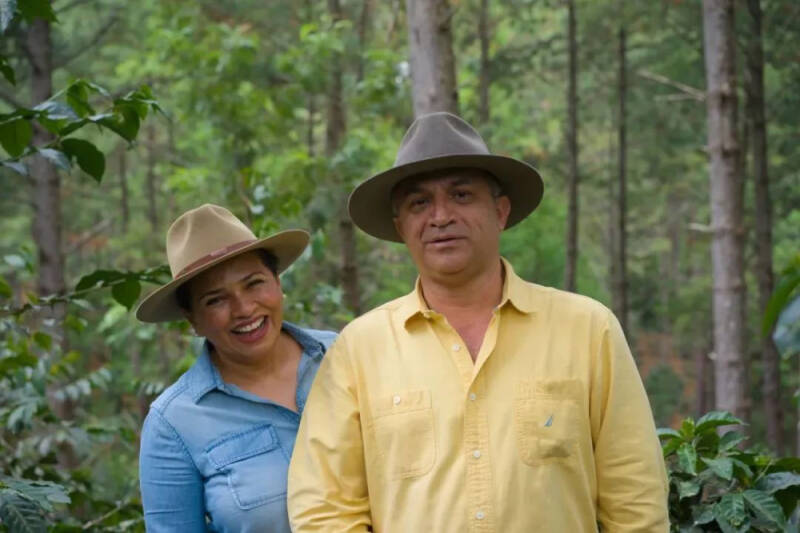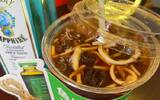What are the flavor characteristics of Honduran coffee? What areas are coffee mainly grown?
Thanks to the rich topography, diverse climate, forests and mountains of Central America, and the volcanic belt of more than 1300 kilometers, Central American coffee has a position in the global market. But when it comes to coffee from Central America, most of them think of Costa Rica and Panama.
But in recent years, Honduras has become the largest coffee producer in Central America, maintaining high production and improving coffee quality at the same time. The topography of Honduras is complex, mainly composed of mountains, valleys, plateaus and coastal areas, with mountains in the north, lava plateaus in the central plateau and river valleys in the south. It is the main agricultural area with an average elevation of 90-1500 meters above sea level.
At present, there are about 280000 hectares of coffee farms in Honduras, but the country is dominated by small farmers, accounting for 60% of the national production. Most of these coffee farms are less than 3.5 hectares, but there are also many excellent coffee farms and estates, such as La Salsa Manor La Salsa, Laurel Farm El Laurel, Sweet Orange Manor El Naranjo, etc., but when it comes to those with a long history, we have to mention the Caballero family Caballero.

The Caballero family of Caballero is one of the most famous families in the coffee industry in Honduras. Honduran coffee was grown in the 18th century with a history of more than 200 years, while the Caballero family began to grow coffee in Honduras in the 20th century and has a history of about 120 years, which may be said to promote the development of the coffee industry in Honduras. And its third-generation heir Fabio Antonio Caballero Martinez is also known as the forerunner of Honduran boutique coffee growers. At present, the estate is mainly managed and managed by the fourth-generation heir Marysabel Caballero and her husband.
In Honduras, coffee producing areas are divided according to the Honduran Coffee Institute (IHCAFE), which is divided into six major coffee producing areas: copan, opalaca, montecilos, conayagua, Akata agalta tropical and Paraso el paraiso.
The Montesius (Montecilos) coffee producing area is located between the La Paz of La Paz, Comayagua of Comayagua, Santa B á rbara of Santa Barbara and Intibuc á of Intibuka. The Caballero family now owns about 200ha of farmland, mainly growing coffee on 17 farms / estates, including El Puente and La Macaria, mainly in La paz province.
The province is located in the border area of southwestern Honduras and El Salvador, which is mostly mountainous, has many rivers and is rich in resources, the annual rainfall is 1300-2300 mm, and coffee is grown at an altitude of 1200-1700 meters. The coffee produced here is full of rich fruit and sweet aromas, with lemon and floral flavors. Lemon and fruit aromas are characteristic, especially peaches and oranges, with lively and bright acidity, velvety texture and a lingering finish, so many estates appear on the Honduras Excellence Cup COE list all the year round.
The Caballero family understands the importance of sustainable development, so they spend a lot of effort to improve the soil quality of their estates, such as fertilizing with organic fertilizers, reducing chemicals such as herbicides and pesticides, and shading coffee. Measures such as filtering water discharge to protect the jungle and water sources. And has its own processing plant, and has a professional team in the farms and processing plants to control the quality, produce high-quality coffee, and grow many varieties in its estates, such as Catuai, Geisha, Java and so on. As a result, a number of farms and estates owned by the Caballero family have always been victorious generals in the Honduras Excellence Cup COE competition.
For more information about coffee producing areas, please scan the code directly and follow: coffee comments.
Long press the QR code to follow:
TRANSLATE with
XEnglishArabicHebrewPolishBulgarianHindiPortugueseCatalanHmong DawRomanianChinese SimplifiedHungarianRussianChinese TraditionalIndonesianSlovakCzechItalianSlovenianDanishJapaneseSpanishDutchKlingonSwedishEnglishKoreanThaiEstonianLatvianTurkishFinnishLithuanianUkrainianFrenchMalayUrduGermanMalteseVietnameseGreekNorwegianWelshHaitian CreolePersian
TRANSLATE with
COPY THE URL BELOW
BackEMBED THE SNIPPET BELOW IN YOUR SITE Bing Webmaster PortalBack
Important Notice :
前街咖啡 FrontStreet Coffee has moved to new addredd:
FrontStreet Coffee Address: 315,Donghua East Road,GuangZhou
Tel:020 38364473
- Prev

A 10-year record high! Arabica coffee beans cost 273.4 cents/pound
As of the close of market this afternoon, the closing price of U.S. Type C coffee futures, the benchmark for the coffee bean industry, closed at 270.40 cents/pound, with the highest price at 273.4 cents/pound, setting a 10-year high. According to media reports, due to various climate factors in Brazil, as well as other major coffee producing countries, are also facing climate challenges.
- Next

Almost carried away! The brand jointly promotes Houttuynia and American style to persuade customers to quit!
▲ Click to pay attention| Daily Boutique Coffee Culture Magazine Coffee Workshop Recently, the chain brand Nova launched an American style of Houttuynia. The unexpected combination was shocking and aroused many netizens 'curiosity about it. Regarding Houttuynia cordata, maybe some friends don't know much about it, but they only know that it is a kind of way that can play a clear role.
Related
- What effect does Italian American coffee with filter paper have? Will coffee taste better if it is put on filter paper at the bottom of the powder bowl?
- What is the color difference in coffee beans? What are the characteristics of honey processed coffee beans? Why are the anaerobically treated coffee beans uneven in color?
- How does novice Xiaobai quickly get started and make coffee? Newbies learn to make coffee by hand and share the specific steps and process process!
- Costa tea has a shelf life of 100 years?! Expert: Unable to verify
- It's a huge uproar! American milk addition was rejected by Manner employees?!
- Mocha pot coffee bean recommendations| How fine and how much powder should be used for grinding? What parameter ratios do I need to use to make milk with Mocha pot coffee?
- What are the characteristics of the world's top ten coffee beans treated with Costa Rica honey? How to make black honey kadura from Tarazhu Pilon Processing Plant taste good?
- How to make deep-roasted coffee? What grinding water temperature does authentic Jamaica Blue Mountain No. 1 coffee use to brew it well?
- Selected high-grade rose summer coffee flavor tasting guide Why Panama rose summer has the aroma of flowers and fruits
- What equipment does a novice Xiaobai need to buy to learn to make coffee? Filter cup electronic scale bean grinder manual flushing pot purchase guide

